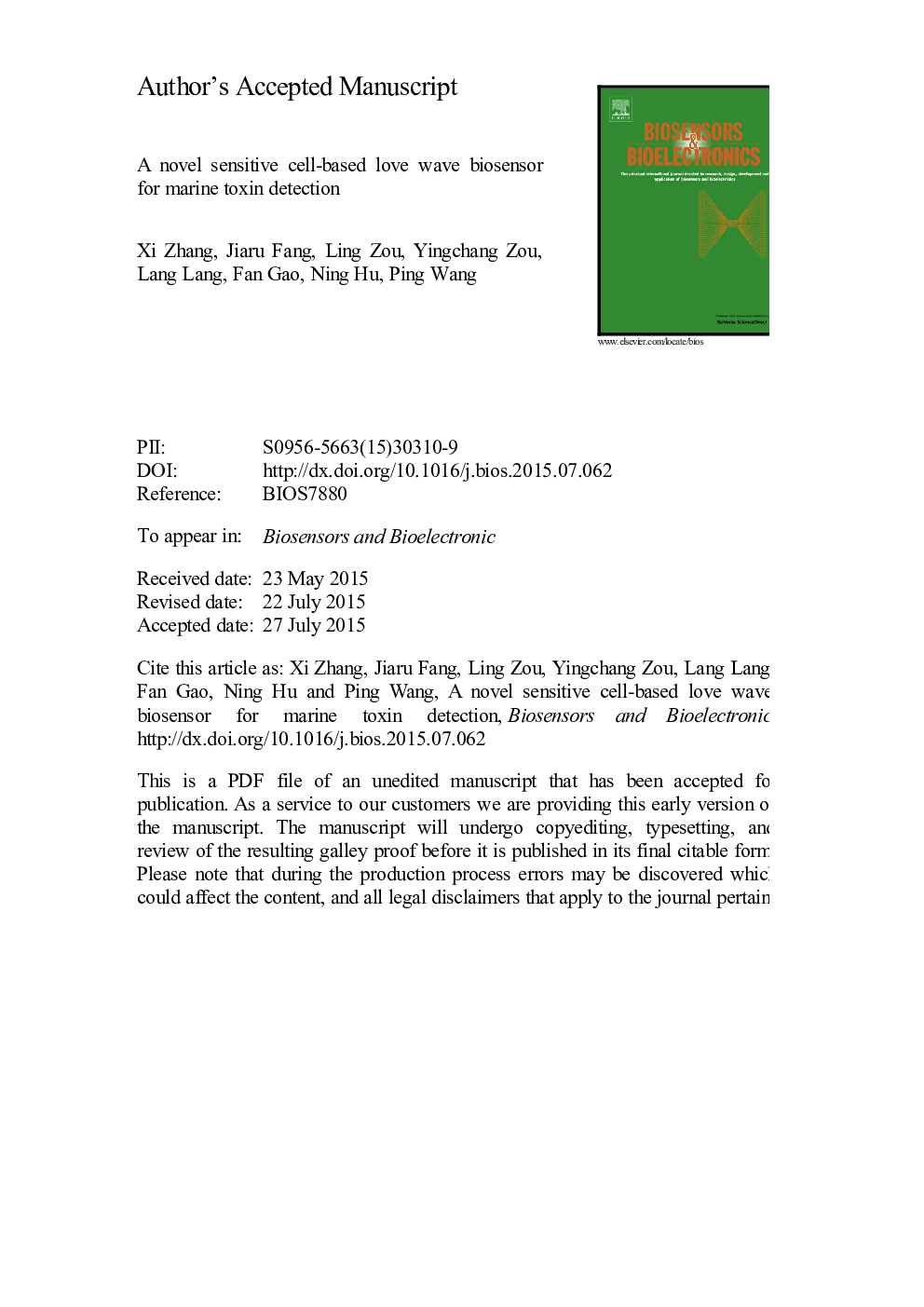| Article ID | Journal | Published Year | Pages | File Type |
|---|---|---|---|---|
| 7231625 | Biosensors and Bioelectronics | 2016 | 29 Pages |
Abstract
A novel HepG2 cell-based biosensor using Love Wave sensor was developed to implement the real-time and sensitive detection of a diarrheic shellfish poisoning (DSP) toxin, Okadaic acid (OA). Detachable Love Wave sensor unit and miniaturized 8-channel recording instrument were designed for the convenient experimental preparation and sensor response signal measurement. The Love Wave sensor, whose synchronous frequency is around 160 MHz, was fabricated with ST-cut quartz substrate. To establish a cell-based biosensor, HepG2 cells as sensing elements were cultured onto the Love Wave sensor surface, and the cell attachment process was recorded by this biosensor. Results showed this sensor could monitor the cell attachment process in real time and response signals were related to the initial cell seeding densities. Furthermore, cell-based Love Wave sensor was treated with OA toxin. This biosensor presented a good performance to various OA concentrations, with a wide linear detection range (10-100 μg/L). Based on the ultrasensitive acoustic wave platform, this cell-based biosensor will be a promising tool for real-time and convenient OA screening.
Related Topics
Physical Sciences and Engineering
Chemistry
Analytical Chemistry
Authors
Xi Zhang, Jiaru Fang, Ling Zou, Yingchang Zou, Lang Lang, Fan Gao, Ning Hu, Ping Wang,
